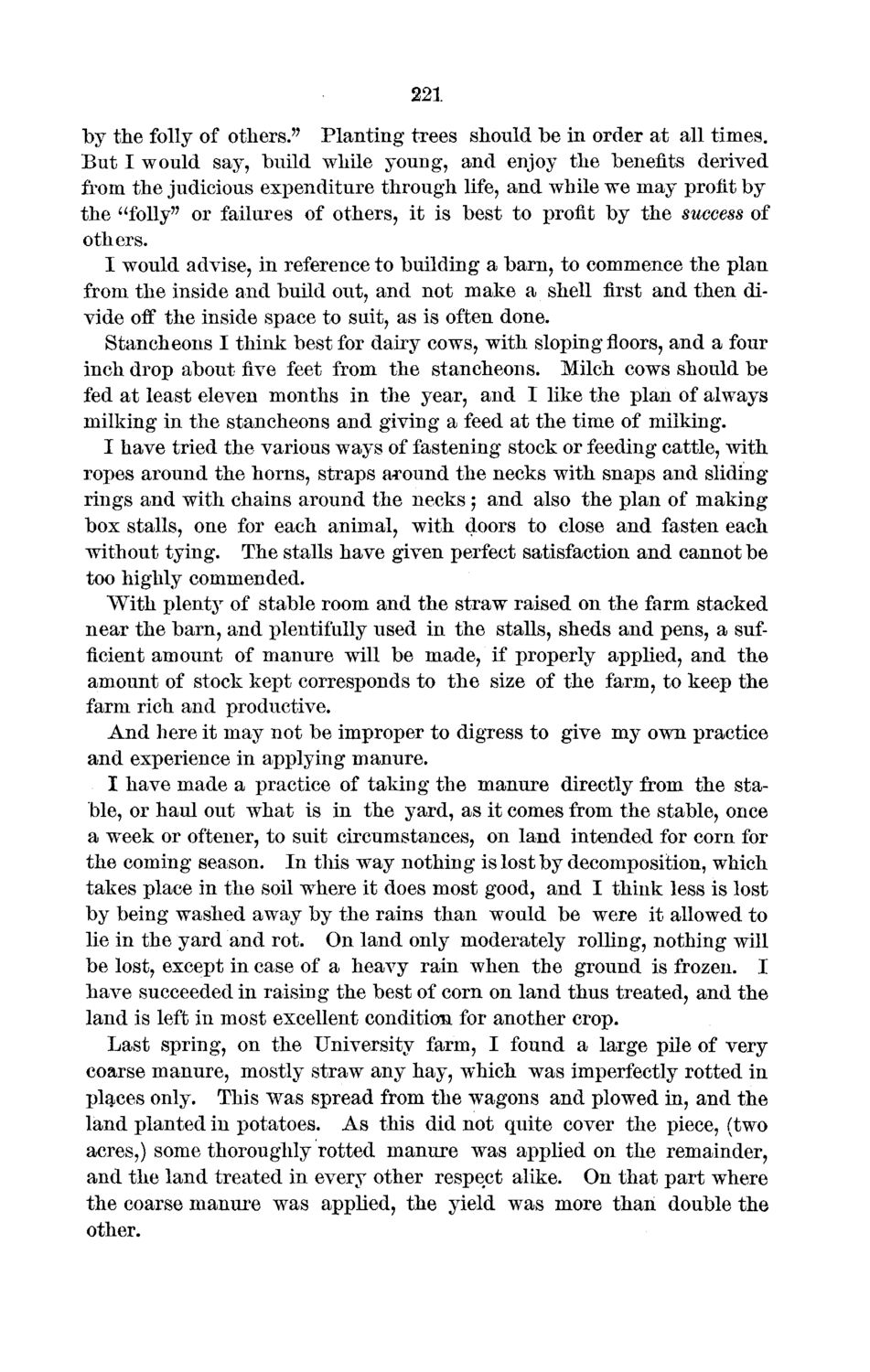| |
| |
Caption: Board of Trustees Minutes - 1872
This is a reduced-resolution page image for fast online browsing.

EXTRACTED TEXT FROM PAGE:
221 by the folly of others." Planting trees should be in order at all times. But I would say, build while young, and enjoy the benefits derived from the judicious expenditure through life, and while we may profit by the "folly" or failures of others, it is best to profit by the success of others. I would advise, in reference to building a barn, to commence the plan from the inside and build out, and not make a shell first and then divide off the inside space to suit, as is often done. Stanch eons I think best for dairy cows, with sloping floors, and a four inch drop about five feet from the stancheons. Milch cows should be fed at least eleven months in the year, and I like the plan of always milking in the stancheons and giving a feed at the time of milking. I have tried the various ways of fastening stock or feeding cattle, with ropes around the horns, straps around the necks with snaps and sliding rings and with chains around the necks ; and also the plan of making box stalls, one for each animal, with doors to close and fasten each without tying. The stalls have given perfect satisfaction and cannot be too highly commended. With plenty of stable room and the straw raised on the farm stacked near the barn, and plentifully used in the stalls, sheds and pens, a sufficient amount of manure will be made, if properly applied, and the amount of stock kept corresponds to the size of the farm, to keep the farm rich and productive. And here it may not be improper to digress to give my own practice and experience in applying manure. I have made a practice of taking the manure directly from the stable, or haul out what is in the yard, as it comes from the stable, once a week or oftener, to suit circumstances, on land intended for corn for the coming season. In this way nothing is lost by decomposition, which takes place in the soil where it does most good, and I think less is lost by being washed away by the rains than would be were it allowed to lie in the yard and rot. On land only moderately rolling, nothing will be lost, except in case of a heavy rain when the ground is frozen. I have succeeded in raising the best of corn on land thus treated, and the land is left in most excellent condition for another crop. Last spring, on the University farm, I found a large pile of very coarse manure, mostly straw any hay, which was imperfectly rotted in places only. This was spread from the wagons and plowed in, and the land planted in potatoes. As this did not quite cover the piece, (two acres,) some thoroughly rotted manure was applied on the remainder, and the land treated in every other respect alike. On that part where the coarse manure was applied, the yield was more than double the other.
| |